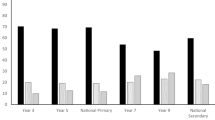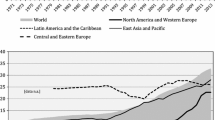Abstract
The entry examination for admission to high schools and universitiesin Japan is a crucial element in the screening process, especially in thecase of the more prestigious institutions. This paper examines whycompetitive entrance examinations are such an important feature of thesystem, analyses their impact on the development of social character andthen discusses to what extent this social character interacts with that ofthe typical Japanese white collar worker, the one perpetuating the other.Credentialism alone is not a sufficient explanation of the Japanesephenomenon since there is no overall shortage of places. The outstandingfeature of the system is that applicants aim at institutions one rank higherthan one they are confident of entering. This is illustrated with a study ofdata from high schools in the Kansai District. The whole process can bedescribed as one of successive contests in which, as in a tournament, theprize (admission to a leading university) goes only to those who win inevery round of the competition. This in turn leads to the prize ofemployment by a major company since mostly these recruit on the basis of theuniversity of origin rather than the particular specialisation. The paperconcludes by suggesting that the process described constitutes a hiddenagenda for the production of conformists unlikely to challenge the ethos ofthe institution or organisation. There are, however, signs that smallercompanies have become more important in recruitment as the major companieshave reduced their intakes. Smaller companies cannot afford lengthy in-housetraining and are becoming more concerned with applicants' competences thanwith their universities of origin.
Similar content being viewed by others
References
Arrow, K. (1973). 'Higher education as a filter', Journal of Public economics 2, 193–216.
Becker, G. (1964). Human Capital, New York: Columbia University Press.
Blau, P.M. and Duncan, O.D. (1967). The American Occupational Structure, New York: Wiley.
Bourdieu, P. (1974).'The school as a conservative force: scholastic achievement and cultural inequalities', in Eggleston, J. (ed.), Contemporary Research in the Sociology of Education, London: Methuen, pp. 32–46.
Bourdieu, P. and Passeron, J-C. (1977). Reproduction in Education, Society and Culture, London, Sage.
Crichton, M. (1992). Rising Sun, Janklow & Nesbit.
Delamont, S. (1984) 'Debs, dollies, swots and weeds: classroom style at St. Luke's', in Walford, G. (ed.), British Public Schools, London: Falmer Press, pp. 65–86.
Durkheim, E. (1964). The Rules of Sociological Method, New York: Free Press.
Durkheim, E. (1938). L'evolution pedagogique en France, Paris: Alcan.
The Economist (1990). 'Japan's School: Why Can't Little Taro Think?', April 21.
Farao, T. and Skvoretz, J. (1986). 'Action and institution, network and function', Sociological Forum 1, 219–250.
Foucault, M. (1977). Discipline and Punish: the Birth of the Prison, London, Penguin.
Goffman,E. (1952). 'On cooling the mark out: some aspects of adaptation to failure',Psychiatry 15, 451–463.
Gouldner, A. (1959). 'Organizational analysis', in Merton, R.K. et al. (eds.), Sociology Today, New York: Basic Books, pp. 400–428.
Hoskin, K. (1990). 'Foucault under examination', in Ball, S.J. (ed.), Foucault and Education, London: Routledge, pp. 29–53.
Ishida, H. (1989). 'Gakureki to shakaikeizaiteki chii no tassei' [Educational Credentials and Socio-economic Status Attainment], Shakaigaku Hyoron[Japanese Sociological Review] 40, 252–266.
Jukenkai (1917). 'Some advice for the preparation for the entrance examination', Jukenai 1(1), 4.
Kinmonth, E. (1981). Self-Made Man in Meiji Japanese Thought. Berkeley, University of California Press.
Koike, K. and Watanabe, I. (1979). Gakureki shakai no kyozo[The Illusion of the Educational Credential Society], Tokyo: Toyo Keizai Shinposha.
Koshigoe, S. (1993). 'Singaku tekisei kensa no haishi to nihonjin no kaiso soshikika no kihan' [Discontinuation of Scholastic Aptitude Test and Organizing Folk Norm in Japan], Kyoiku shakaigaku kenkyu[The Journal of Educational Sociology] 52, 178–207.
Layard, E. and Psacharopoulos, G. (1974). 'The screening hypothesis and the return to education', Journal of Political Economy 82, 985–998.
Merton, R. (1968). Social Theory and Social Structure, New York: Free Press.
Musgrove, F. (1964). Youth and the Social Order, London: Routledge.
Nakatani, I. (1991). 'Shigoto no shu-hen' Asahi Shinbun Evening Post, December 3.
Rohlen, T. (1983). 'The Juku phenomenon: an exploratory essay', Journal of Japanese Studies 6, 207–242.
Rohlen, T. (1983). Japan's High Schools, Berkeley: University of California Press.
Rosenbaum, J.(1976). Making Inequality: The Hidden Curriculum of High School Tracking, New York: Wiley.
Schultz, W. (1961). 'Investment in Human Capital', American Economic Review 51, 1–17.
Singleton, J. (1989). 'Gambaru: a Japanese cultural theory of learning', in Shields, J. (ed.), Japanese Schooling, Pennsylvania: Pennsylvania State University, pp. 8–15.
Takeuchi, Y. (1991). Risshi, kugaku and shusse[A Social History of the Entrance Examination in Japan], Tokyo: Kodansha.
Takeuchi, Y. (1991). 'Myth and reality in the Japanese educational selection system', Comparative Education 27 (1).
Thurow, L. (1975). Generating Inequality, New York: Basic Books.
Treiman, D. (1970). 'Industrialization and Social Stratification', in Laumann, E. (ed.), Social Stratification, Indianapolis: Bobbs-Merrill, pp. 207–234.
Tsuneyoshi, R. (1992). Ningen keisei no nichi bei hikaku[A Comparative Study of Japan and United States on Personality Formation], Tokyo: Chuokoronsha.
Turner, R. (1960). 'Sponsored and contest mobility and the school system', American Sociological Review 25, 855–867.
Ushiogi,M. (1977). 'Gakureki no keizaiteki koyo' [The Economic Effectiveness of Educational Credentials] in Aso, M. and Ushiogi, M. (eds.), Gakureki koyo ron[The Effectiveness of Educational Credentials], Tokyo: Yuhikaku, pp. 133–152.
Yano, M. (1991). Shiken no jidai no shuen[The End of the Examination Era], Tokyo: Yushindo.
Author information
Authors and Affiliations
Rights and permissions
About this article
Cite this article
Takeuchi, Y. The self-activating entrance examination system – its hidden agenda and its correspondence with the Japanese “salary man”. Higher Education 34, 183–198 (1997). https://doi.org/10.1023/A:1003001402176
Issue Date:
DOI: https://doi.org/10.1023/A:1003001402176




